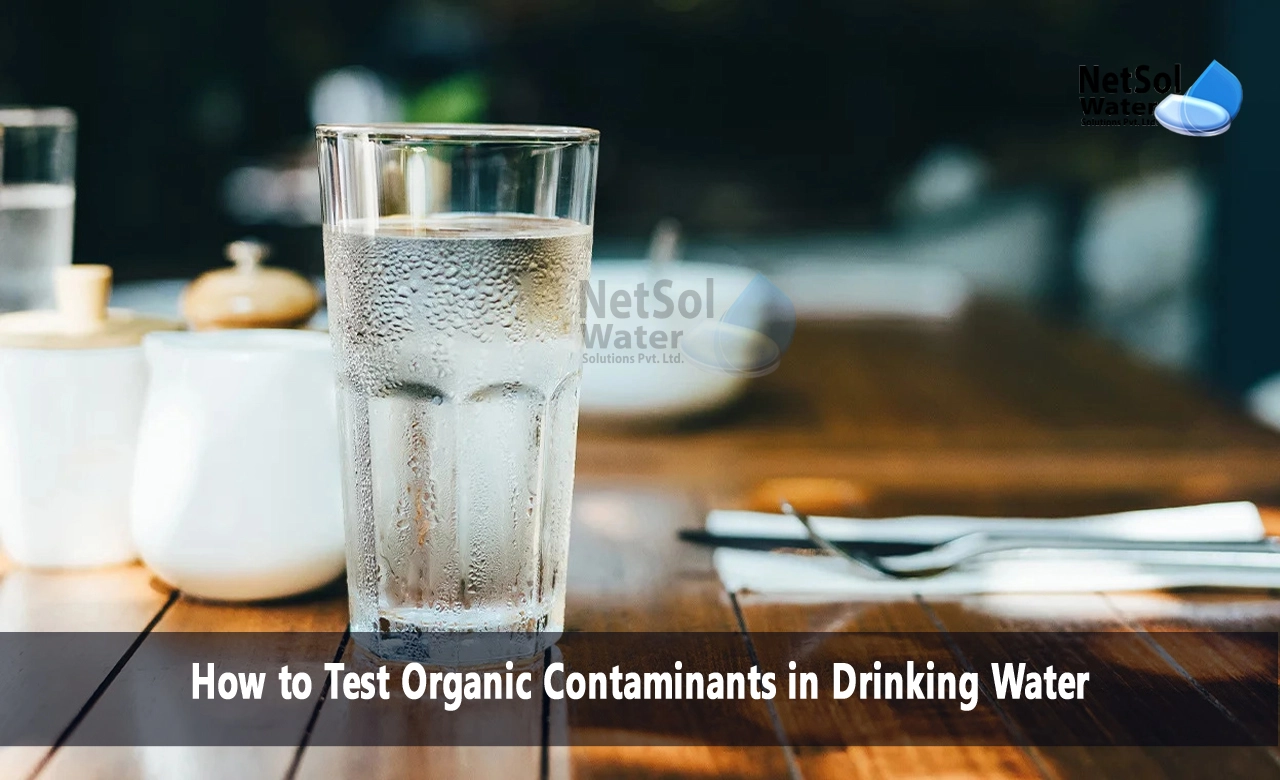How to Test Organic Contaminants in Drinking Water?
Organic contaminants like pesticides, solvents, and disinfection byproducts represent chronic health risks potentially present in drinking water. Testing methodologies capable of detecting trace organic chemicals are essential for ensuring safety. We will examines analytical techniques for monitoring organic drinking water contaminants.
Target Organic Contaminants
Classes of organic contaminants of concern include:
1- Synthetic pesticides: Legacy organochlorines like DDT plus current use herbicides, fungicides and insecticides.
2- Industrial chemicals: Benzene, toluene and other solvents; polychlorinated biphenyls (PCBs); petrochemicals.
3- Disinfection byproducts: Chloroform, bromate, and other compounds produced from chlorine and ozone treatment.
4- Naturally occurring: Algae toxins like microcystin, tannins, and lignins from decaying vegetation.
5- Pharmaceuticals and hormones: From human wastewater sources entering drinking water supplies.
Testing method sensitivity and selectivity vary for each compound class.
Sample Collection and Preparation
Proper sampling technique is crucial for accurate results. Key considerations include:
1- Sample containers: Glass is preferred over plastic; container pre-treatment may be necessary.
2- Sample volumes: Typically range from 40 mL up to 1 L.
3- Sampling locations: Raw water, throughout treatment, distribution system representative sites.
4- Preservation: pH adjustment, dechlorination, chilling.
5- Holding times: Time limitations between sampling and extraction/analysis.
6- Shipping: Procedures to maintain integrity during transport.
Following established protocols ensures samples reflect in situ water composition.
Extraction Techniques
Since organics are typically at trace levels in water, extraction concentrates them for detection. Standard methods include:
1- Liquid-liquid extraction (LLE): Partitioning into an immiscible organic solvent.
2- Solid phase extraction (SPE): Sorption onto a column packing material.
3- Purge-and-trap: Stripping onto an adsorbent trap using inert gas bubbling.
4- Solid phase microextraction (SPME): Concentration onto a fibre coating immersed in the sample.
Extraction efficiency varies for each compound, so methods may need to be compound-specific.
Quantification Instrumentation
Common analytical instrumentation for organic water contaminants includes:
1- Gas chromatography: Volatile and semi-volatile compounds are thermally separated and detected with mass spectrometry (GC-MS) or other detectors.
2- Liquid chromatography: Non-volatiles are separated in a liquid mobile phase before detection by MS or ultraviolet detectors (LC-MS, LC-UV).
3- Infrared spectroscopy: Compounds containing IR-active functional groups can be measured directly without chromatography.
4- Immunoassay: Utilizes antibodies specific to contaminants for rapid quantification.
Technique selection depends on target compounds, detection limits, and cost constraints. Advanced methods like tandem MS enable unequivocal confirmation of trace contaminants.
Emerging Testing Technologies
Research is advancing new technologies with capabilities surpassing traditional procedures:
1- Biosensors: Microbes or enzymes generating electrical or optical signals in response to target chemicals.
2- Microfluidics: Miniaturized analysis systems performing on-chip extraction, separation, and detection.
3- Mass spectrometry imaging: Direct analysis of organics in water samples with high spatial resolution.
4- Nuclear magnetic resonance: Identifies compound structures and concentrations in small volumes.
Field-ready biological and microscale instruments enable continuous, on-site water quality assessment rather than just periodic grab samples.
Quality Assurance/Quality Control
1- Certified reference materials: Matrix spikes validate method recovery and bias.
2- Sample replicates: Demonstrate precision and repeatability.
3- Blank analysis: Checks for cross-contamination during processing.
4- Standard calibration: Verifies instrument sensitivity and quantitative validity.
5- Data validation: Confirms proper documentation, recoveries, holding times and detection limits.
Strict adherence to established QA/QC protocols is essential when health benchmarks are at ppt to ppb levels.
Conclusion
Advanced analytical capabilities make testing for trace organics in drinking water possible, but techniques must match the sensitivity and selectivity required for each contaminant class. Continued technological improvements will expand on-site, real-time monitoring to complement periodic sampling. Combining multiple complementary methods provides assurance that complex organic mixtures in water are fully characterised at health-relevant levels. With vigilance and care from sampling to analysis, organic contaminant testing ensures safe water free of toxic trace chemicals.
Netsol Water is Greater Noida-based leading water & wastewater treatment plant manufacturer. We are industry's most demanding company based on client review and work quality. We are known as best commercial RO plant manufacturers, industrial RO plant manufacturer, sewage treatment plant manufacturer, Water Softener Plant Manufacturers and effluent treatment plant manufacturers. Apart from this 24x7 customer support is our USP. Call on +91-9650608473, or write us at enquiry@netsolwater.com for any support, inquiry or product-purchase related query.



